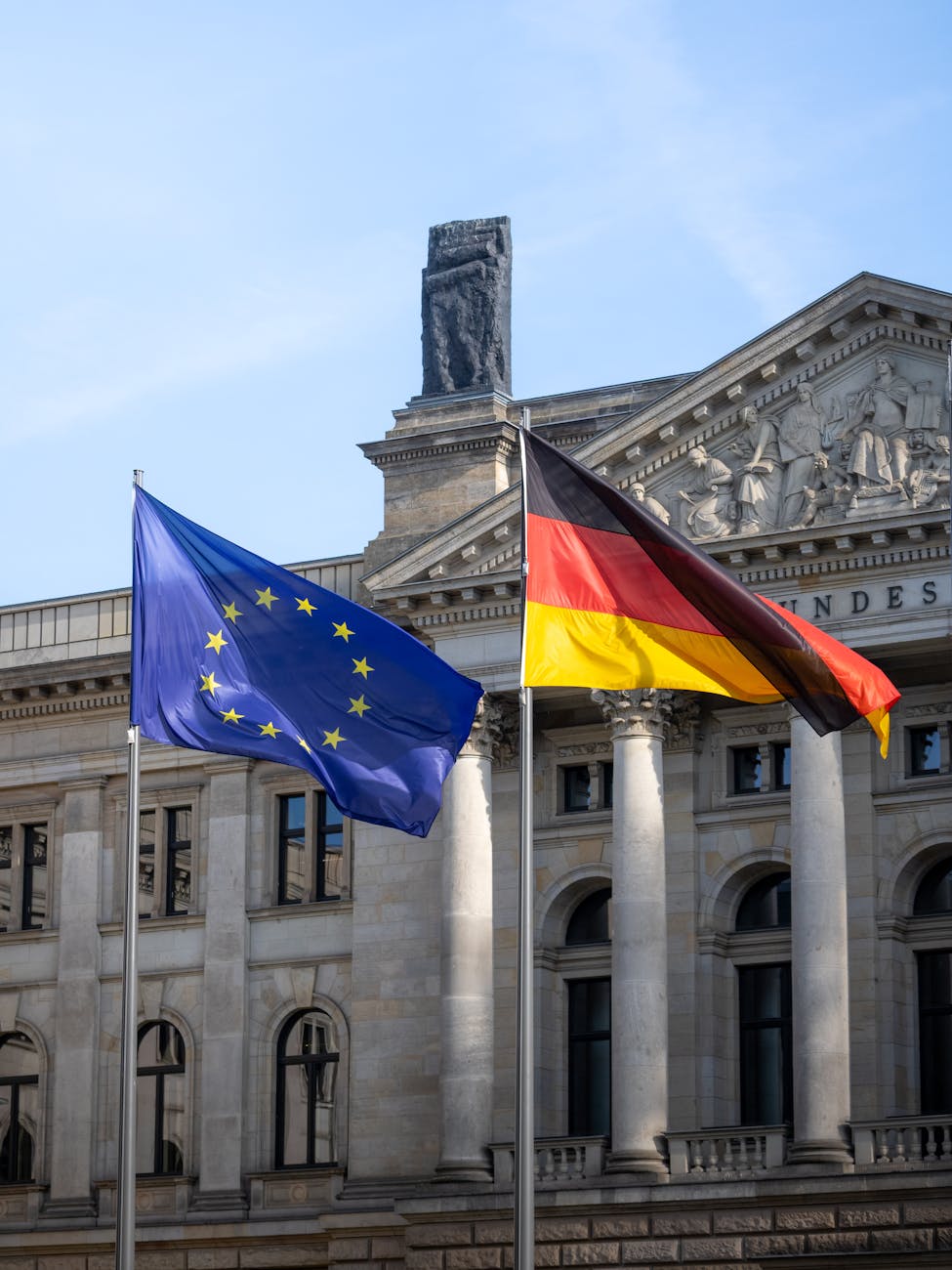The Unseen Race: Navigating the AI Revolution Before It Outpaces Us
As artificial intelligence accelerates at an unprecedented pace, the urgent need for robust ethical frameworks and societal preparation comes into sharp focus.
The relentless march of artificial intelligence is no longer a futuristic concept; it is a present-day reality that is reshaping industries, economies, and societies at an astonishing speed. As AI systems become more powerful and pervasive, a critical question emerges: are we adequately preparing for the profound societal transformations they will inevitably bring? This article delves into the burgeoning crisis of AI development outpacing the implementation of essential guardrails, exploring the current landscape, the potential consequences of unchecked advancement, and the imperative for proactive, thoughtful design to steer this powerful technology toward a future of abundance, not disruption.
Context & Background: The Accelerating Ascent of AI
The field of artificial intelligence has experienced a meteoric rise in recent years. What once seemed like science fiction is now embedded in our daily lives, from personalized recommendations and voice assistants to sophisticated diagnostic tools in healthcare and autonomous vehicles. This acceleration is fueled by several converging factors:
- Exponential Growth in Computing Power: The continuous improvement in processing power, particularly through advancements in GPUs (Graphics Processing Units), has enabled the training of increasingly complex AI models. This aligns with Moore’s Law, which, though debated in its direct applicability to all aspects of computing, has historically described the trend of increasing computational capability.
- Availability of Massive Datasets: The digital age has generated an unprecedented volume of data, which serves as the fuel for AI algorithms. The ability to collect, store, and process this data has been crucial for training sophisticated machine learning models. Organizations like the International Business Machines Corporation (IBM) have been instrumental in discussing and developing strategies around big data management.
- Algorithmic Breakthroughs: Innovations in machine learning, particularly in areas like deep learning and neural networks, have led to significant performance improvements across a wide range of AI applications. Researchers from institutions such as Google AI and DeepMind consistently publish foundational research in this area.
- Increased Investment and Research: Governments and private corporations worldwide are pouring billions of dollars into AI research and development. This sustained investment is accelerating the pace of innovation, with reports from entities like Statista often detailing the scale of this global investment.
This confluence of factors has created an environment where AI capabilities are advancing at a pace that often outstrips our societal capacity to adapt, regulate, and understand its full implications. The article from VentureBeat highlights this critical temporal gap, suggesting that without intentional design, the future could be shaped by the technology itself, rather than by human foresight.
In-Depth Analysis: The Looming Crisis of Speed Without Guardrails
The core of the “looming crisis” lies in the rapid advancement of AI capabilities without a corresponding development of robust ethical guidelines, regulatory frameworks, and societal preparedness. This imbalance creates a fertile ground for unintended consequences and exacerbates existing societal challenges.
The Velocity of Innovation
AI development is not linear; it is often characterized by sudden leaps in capability, driven by novel architectures and training methodologies. For instance, the emergence of large language models (LLMs) like GPT-3 and its successors demonstrated a dramatic increase in natural language understanding and generation, catching many observers by surprise. This rapid evolution means that by the time regulations or ethical considerations are formulated, the technology may have already surpassed the initial concerns, requiring constant adaptation and foresight.
Potential Negative Ramifications
Without adequate guardrails, the accelerated development of AI poses several significant risks:
- Job Displacement and Economic Disruption: As AI systems become more capable of performing tasks previously done by humans, there is a substantial risk of widespread job displacement across various sectors. This could lead to increased economic inequality and social unrest if not managed proactively through retraining programs and social safety nets. Reports from organizations like the World Economic Forum frequently analyze these shifting labor market dynamics.
- Bias Amplification and Discrimination: AI systems learn from the data they are trained on. If this data reflects existing societal biases (e.g., racial, gender, socioeconomic), the AI will not only perpetuate but can also amplify these biases, leading to discriminatory outcomes in areas such as hiring, loan applications, and criminal justice. Research from institutions like the American Civil Liberties Union (ACLU) often highlights these concerns.
- Misinformation and Manipulation: The ability of AI to generate realistic text, images, and videos (deepfakes) presents a serious threat to the integrity of information. Malicious actors could leverage these capabilities to spread disinformation, influence public opinion, and destabilize democratic processes. Organizations like the Federal Bureau of Investigation (FBI) have issued warnings about the potential misuse of this technology.
- Erosion of Privacy: The insatiable need for data to train AI models can lead to increased surveillance and the erosion of personal privacy. As AI systems become more adept at analyzing and correlating data, the potential for intrusive monitoring and profiling grows significantly. The Electronic Frontier Foundation (EFF) is a prominent advocate for digital privacy rights.
- Autonomous Systems and Control: The development of autonomous AI systems, from weapons to critical infrastructure management, raises profound questions about control, accountability, and safety. Ensuring that these systems operate within human-defined ethical boundaries and remain under human oversight is paramount. The United Nations has been a forum for discussions on lethal autonomous weapons systems.
The Imperative for Proactive Design
The VentureBeat article’s central thesis is that the future of AI should be actively designed, not passively experienced. This means shifting from a reactive approach to a proactive one, where ethical considerations and societal well-being are integrated into the AI development lifecycle from its inception. This “design for abundance” philosophy aims to harness AI’s potential for positive societal impact while mitigating its risks.
Pros and Cons: A Balanced Perspective on AI’s Dual Nature
Like any transformative technology, AI presents a duality of potential benefits and risks. A comprehensive understanding requires acknowledging both sides.
The Promise of AI (Pros)
- Enhanced Efficiency and Productivity: AI can automate repetitive tasks, optimize processes, and analyze data at speeds and scales impossible for humans, leading to significant gains in productivity across industries.
- Advancements in Healthcare: AI is revolutionizing medicine through improved diagnostics (e.g., image analysis for cancer detection), personalized treatment plans, and accelerated drug discovery. Organizations like the National Institute of Allergy and Infectious Diseases (NIAID) are exploring AI’s role in biomedical research.
- Solving Complex Global Challenges: AI can be a powerful tool for addressing issues like climate change (e.g., optimizing energy grids), poverty, and disease outbreaks by providing insights and enabling more effective interventions.
- Personalized Education and Training: AI can tailor learning experiences to individual needs, providing adaptive educational content and feedback, potentially democratizing access to quality education.
- Innovation and Scientific Discovery: AI is accelerating scientific research by analyzing vast datasets, identifying patterns, and generating hypotheses, leading to breakthroughs in fields ranging from physics to materials science.
The Perils of AI (Cons)
- Job Displacement and Economic Inequality: As mentioned earlier, automation powered by AI could lead to significant job losses, widening the gap between those who benefit from AI and those who are displaced.
- Ethical Dilemmas and Bias: AI systems can exhibit biases inherited from their training data, leading to unfair or discriminatory outcomes. The ethical implications of autonomous decision-making in critical areas are also a significant concern.
- Security Risks and Malicious Use: AI can be weaponized, used for sophisticated cyberattacks, or to create highly effective disinformation campaigns.
- Privacy Concerns and Surveillance: The data-hungry nature of AI can lead to increased surveillance and the potential misuse of personal information.
- The “Black Box” Problem: The complex nature of some AI models makes it difficult to understand how they arrive at their decisions, raising issues of transparency and accountability. This is a subject of ongoing research in the field of Explainable AI (XAI), with initiatives like those from the Defense Advanced Research Projects Agency (DARPA).
Key Takeaways
- AI’s advancement is happening at an exponential rate, outpacing our current ability to establish comprehensive guardrails.
- This speed-gap creates significant risks, including job displacement, amplified bias, widespread misinformation, privacy erosion, and challenges in controlling autonomous systems.
- The “crisis” is not an inherent outcome of AI, but a consequence of failing to proactively design its integration into society with ethical considerations and societal well-being at its core.
- A proactive approach, focusing on “design for abundance,” is crucial to harness AI’s benefits while mitigating its potential harms.
- Balancing AI’s immense potential for good (efficiency, healthcare advancements, solving global issues) with its inherent risks (job losses, bias, malicious use) is a critical societal challenge.
- Collaboration between technologists, policymakers, ethicists, and the public is essential to navigate this complex landscape responsibly.
Future Outlook: Towards a Future of Abundance, Not Disruption
The trajectory of AI development presents a fork in the road. One path leads to disruption, characterized by societal upheaval, increased inequality, and the amplification of existing problems. The other path leads to abundance, where AI serves as a powerful tool for human flourishing, addressing grand challenges and creating new opportunities.
Shaping the AI Landscape
The VentureBeat article emphasizes that the future is not predetermined. We have the agency to shape how AI evolves and integrates into our lives. This requires a fundamental shift in our approach:
- Embedding Ethics in Design: Ethical considerations cannot be an afterthought; they must be integral to the entire AI development lifecycle, from conceptualization and data collection to deployment and ongoing monitoring. This includes principles of fairness, transparency, accountability, and robustness.
- Developing Agile Regulatory Frameworks: Traditional regulatory approaches may be too slow for the pace of AI innovation. We need flexible, adaptive regulatory frameworks that can evolve alongside the technology, often informed by bodies like the National Institute of Standards and Technology (NIST) in the U.S. which is developing AI risk management frameworks.
- Investing in Education and Reskilling: To mitigate job displacement, massive investments in education, lifelong learning, and reskilling programs are necessary to equip the workforce with the skills needed for an AI-augmented economy. Initiatives like those supported by the U.S. Department of Labor’s Employment and Training Administration (ETA) are crucial.
- Fostering Public Dialogue and Engagement: Open and inclusive public conversations about AI are vital to build trust, address societal concerns, and ensure that AI development aligns with democratic values and societal goals. Organizations like the AI Ethics Lab contribute to these discussions.
- International Cooperation: Given AI’s global reach, international cooperation is essential for establishing shared norms, standards, and responsible development practices. The OECD AI Policy Observatory plays a role in fostering international dialogue and policy convergence.
The vision of a future of abundance hinges on our collective ability to steer AI towards beneficial outcomes. This requires a sustained commitment to responsible innovation, foresight, and the willingness to invest in the societal scaffolding necessary to support advanced AI systems.
Call to Action
The time to act is now. The accelerating pace of AI development demands an equally accelerated and thoughtful response from all stakeholders:
- For Developers and Technologists: Prioritize ethical design principles, transparency, and safety in AI development. Advocate for robust internal review processes and be transparent about the limitations and potential biases of your systems.
- For Policymakers and Governments: Develop agile and adaptive regulatory frameworks that foster innovation while safeguarding against risks. Invest significantly in education, reskilling, and social safety nets to address potential economic disruptions. Promote international collaboration on AI governance.
- For Businesses: Integrate AI responsibly into your operations, considering the ethical implications and impact on your workforce and customers. Invest in training and upskilling your employees.
- For Educators and Researchers: Continue to advance our understanding of AI’s societal impacts, develop new ethical frameworks, and educate the next generation of AI professionals with a strong ethical grounding.
- For the Public: Educate yourselves about AI, engage in public discourse, and advocate for AI development that aligns with your values. Demand transparency and accountability from those developing and deploying AI systems.
The opportunity to build a future of abundance powered by AI is within our grasp. However, it requires a concerted, global effort to ensure that the speed of innovation is matched by the wisdom of our planning and the strength of our guardrails. By embracing a proactive, human-centered approach, we can navigate this transformative era and unlock AI’s potential for the benefit of all.








